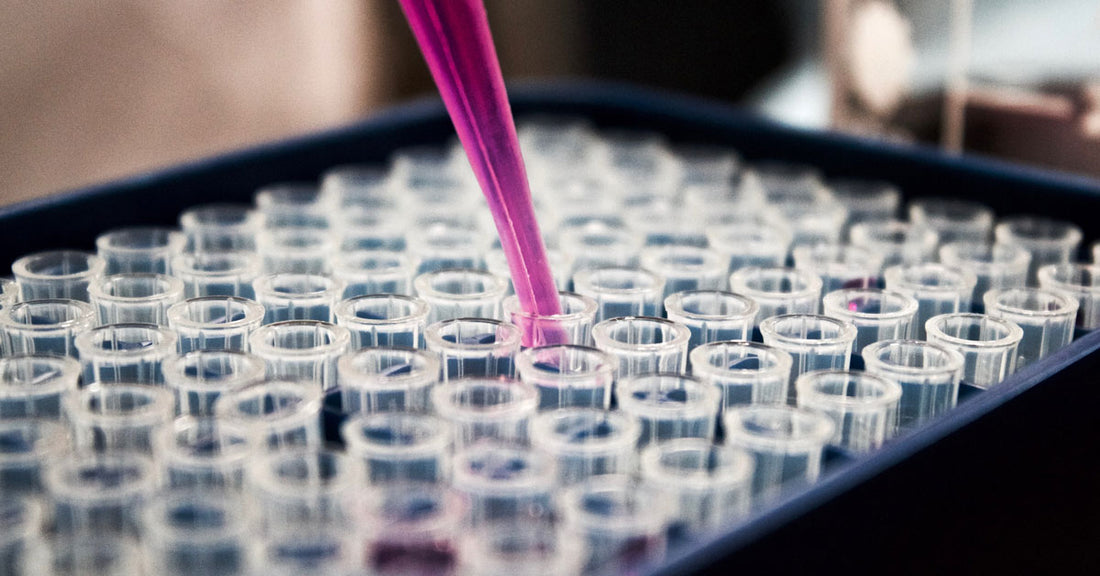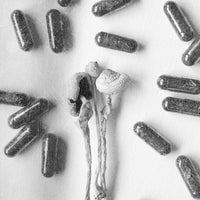In his book Tryptamine Palace, the late James Oroc described a time when he was “a hardened atheist who embraced an inherited cynical scientific material-reductionist worldview.” Then came his first encounter with the most potent psychedelic known to humankind: 5-MeO-DMT.
Oroc wrote that this experience made him “indelibly aware of the existence of G/d.” (He used the name G/d to denote what he described as “the transcendent, formless Godhead,” as distinct from the robed, lightning bolt-hurling deity of religion.)
Oroc’s transformation was hardly an anomaly. 5-MeO-DMT has been nicknamed “the God molecule” in honor of its reputation for inducing the ultimate mystical experience: the temporary dissolution of personal identity, leading to a reunion with what has been called Brahman, the Pure White Light, Source and—yes—God, among many other things.
Clinical studies like this one and this one have confirmed 5-MeO’s ability to initiate a “God encounter.” The overwhelming majority of participants in these trials had spiritual breakthroughs that met the criteria of “complete mystical experiences” after taking this staggeringly powerful alkaloid.
On a more worldly level, study results have suggested that in some situations, the ingestion of 5-MeO may promote mental health and an overall increase in happiness. No less of a high-profile figure than Hunter Biden—yes, the current U.S. president’s son—has credited this experience with helping him heal from lifelong hurts. The degree to which 5-MeO’s users reap these kinds of benefits seems to be directly tied to the potency of the mystical experience described above.
Hey! Poachers! Leave Them Toads Alone.
5-MeO can be found in at least nine kinds of trees, shrubs and plants, but it more commonly comes from the glands of the Sonoran Desert toad, aka Incilius alvarius (formerly known as Bufo alvarius). In areas like northwestern Mexico, Arizona, Texas, Florida and Colorado, makers of “Bufo”—smokable 5-MeO-DMT—capture these toads and milk their glands for secretions that are then dried into crystals.
This has raised some concerns: Along with the stress that the toads may undergo from being captured and milked, the extraction process is said to deplete the toads of their natural defenses, potentially making them more vulnerable to predators. Tucson Herpetological President Robert Villa has warned that the unchecked handling of the toads brings the threat of harmful bacteria to their ecosystem, and some wildlife conservationists fear that the combined factors of overmilking, climate change and human overdevelopment could lead to the extinction of the species.
According to a report that the group Fair Trade Toad issued in May 2022, the narrative that the Sonoran Desert toad is in danger of extinction is designed to “provide a legal framework on the Mexican law enforcement to forbid any type of handling of the Bufo alvarius (aka Incilus alvarius).” The report warns that while in theory this would directly protect the toads, history shows that these kinds of policies raise the black market value of the forbidden substance. Thus, the outlawing of toad handling would increase depredation. As an alternative to this, Fair Trade Toad is working to develop and promote sustainable, humane and sanitary methods of extracting the toad secretion.
Martin W. Ball, Ph.D., host of the podcast The Entheogenic Evolution and author of numerous books about 5-MeO-DMT’s capacity for inducing nondual “God consciousness,” agrees that toad milking can be done in a harm-free way. He claims that when he participated in this process for several nights in 2015, he didn’t see any mistreatment of the toads.
“After they were milked, they only hopped a few feet away and then went about their business,” he recalls. “It didn’t seem to cause them harm or really bother them.”
Ball notes, however, that due to rising demands for Bufo, poachers are taking toads out of the desert and selling them in shops or online. “Also, numerous people are now taking it upon themselves to go out and milk toads in the wild and then offer the secretions for sale,” he adds. “This situation is only made worse by the false narrative that Bufo is ‘better’ than lab-made 5-MeO-DMT.”
The synthetic 5-MeO to which he alludes is often touted by psychonauts—Ball among them—as a sustainable, cruelty-free alternative to Bufo. “Given that demand for the 5-MeO-DMT experience in all its forms is steeply on the rise globally, we need to ask what’s most sustainable and more ecologically friendly in the long run, while still providing a quality product that has the full ‘God Molecule’ effect,” he offers.
Does It, Though?
Most people who have tried both organic and synthetic 5-MeO-DMT seem to feel there are at least some small differences between the two. Ball is of the view that “pure molecule 5-MeO-DMT is cleaner, clearer, smoother and less jagged than Bufo.” In author, journalist and psychedelic spokesman Rak Razam’s experience, the effects of synthetic 5-MeO are more “mind-oriented,” whereas the Bufo is “earthier.”
“My shorthand is: It's like you're going onto the internet, and you use Firefox or Safari or Internet Explorer,” Razam offers. “It's the same internet, but there are slight differences in the look and the feel of how you get to that space.”
The big question, though, is whether the synthetic stuff can kick its users’ asses all the way to the center of existence in the same way that Bufo can. For the aforementioned James Oroc, the answer was an infinitely resounding yes.
“It’s the 5-MeO [in either of these forms] that induces the transpersonal experience, which is the ultimate experience,” he once told an interviewer. Oroc also recommended synthetic over Bufo because its dosage is easier to measure.
In his time as a 5-MeO-DMT facilitator from 2009 to 2016, Ball exclusively gave his clients synthetic 5-MeO. “In my opinion and personal experience, there is no fundamental or significant difference between [the effects of] Bufo secretions and synthetic 5-MeO-DMT,” he says. “This is not to say that they are completely identical, but it is to say that in the most important aspects of providing access to a fully energetically infinite experience of being, they both deliver.”
Holy Smokes
As Razam’s internet analogy suggests, he doesn’t dispute that synthetic 5-MeO is every bit the passport to eternity that Bufo is. He raises an important point about the former, though: Citing the advent of items like a 5-MeO nasal spray and vape pens, he observes that everyone in the capitalist world seems to want this substance to be legalized for medical, therapeutic and recreational use.
“The synthetic has this danger of being just a commodity or something you buy off the dark web,” he cautions. “In an indigenous understanding, like when people make ayahuasca, they sing to the brew, put energy into the brew and engage with the material.” In that sense, he feels that “something about the Bufo keeps it more ceremonial and more shamanic.”
Still, with all the poachers out there who are unceremoniously relieving the toads of fluids to be sold on said dark web, it’s safe to say that not all of the culture surrounding Bufo is sacred. Time will tell if the toad medicine community will follow the example of Fair Trade Toad and other groups that are working to develop the soundest possible methods of collecting the toad secretion. (There’s also a new form of lab-grown Bufo that does no harm to the Sonoran Desert toad, but we’ll save the inevitable controversy around that for another day.)
Despite any misgivings he might have about the commodification of entheogens, Razam says he’s coming to “a growing awareness of the need for synthetic 5-MeO in the global community, because of the scale of activation, because of the promotion of this medicine in general, of the mystical state and of the need for humanity to awaken.”
He believes that as this molecule finds its way to an increasingly eager populace, “there should be some conversation around the quality of synthetic, how it’s made and the intention, energy and vibration of the alchemist making that material as well. We can re-sacralize synthetic if we choose.”
Damon Orion is a writer, musician, artist and teacher based in Santa Cruz, CA. Read more of his work at damonorion.com.
Header image by Louis Reed via Unsplash.
Read more: Talking to Kids About Psychedelics
Read more: How do Mushrooms Communicate?
Read more: Hanifa Nayo Washington is Bringing Community to the Psychedelics Movement




